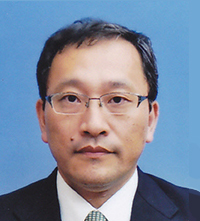Staff
-

ProfessorMineki SaitoMineki Saito
-
Associate ProfessorTadasuke NaitoTadasuke Naito
-
Assistant ProfessorTatsuya SakaiTatsuya Sakai
-
Assistant ProfessorTetsuya OkinoTetsuya Okino
-
InstructorMichi MiuraMichi Miura
-
InstructorMiyuki KunishioMiyuki Kunishio
-
InstructorHiroshi UshirogawaHiroshi Ushirogawa
Focus of Education and Course Overview
Despite drastic advancements in the medical technology and medicine, infection is the most common cause of death worldwide. In 2011, pneumonia was the third most common cause of death in Japan, followed by cerebrovascular disease. Meanwhile, approximately one-sixth of all cancer cases in humans are caused by an infection. Therefore, it can be stated with certainty that medical students, if they become clinicians in any discipline, will experience treating patients with infection. Moreover, due to recent advancements in medicine and improvement in the living environment, the number of compromised hosts and people with allergy have surged; the number of cases of emerging and re-emerging infectious diseases, such as acquired immunodeficiency syndrome, tuberculosis, novel influenza infection, severe fever with thrombocytopenia syndrome (SFTS) and coronavirus disease (COVID-19), have also increased. As such, the scope of microbiological research has drastically expanded, and discipline in clinical medicine is more important now than ever. Those working in the microbiology field are required to have a huge amount of knowledge. It is difficult to selectively study necessary information from a vast amount of sources, which are increasing exponentially every year. In the Microbiology course, students will participate in lectures and practical sessions. Upon completion, they will have acquired the basic knowledge of pathogens, host responses, and other aspects of microbiology. Students will also have acquired the skills that will allow them to apply such knowledge in clinical settings.
Students eligible for this course are in year 2. The course comprises the classes “Living Beings and Microorganisms 1–3.” In Living Beings and Microorganisms 1 (bacteriology), students will learn about the structure and pathogenicity of bacteria and pathogenesis of bacterial infections. The class will be taught in accordance with the core curriculum; original handouts will also be used. Students will also have opportunities to learn about fungi. In practical sessions, students will learn the skills required to handle pathogenic microorganisms through aseptic techniques. Students will verify their theoretical knowledge of the characteristics of bacteria by conducting experiments. Through these activities, students will learn the skills of identifying unknown bacteria based on their bacterial characteristics. In Living Beings and Microorganisms 2 (virology), students will acquire the basic knowledge of the structure and growth of viruses, as well as the diagnosis, treatment, and prevention of viral infections. Topics covered in lectures and practical sessions include the processes of viral infection, viral gene expression, and host response. The lectures and practical sessions are designed to help students acquire the skills required to comprehensively analyze virologic events spanning from molecular to individual levels. In practical sessions, students will conduct an experiment of influenza virus infection. Students will learn the skills of appropriately handling infectious microorganisms while understanding first-hand the impact of viral infection on host cells by closely observing the infection and proliferation of the virus in cell cultures. In Living Beings and Microorganisms 3 (parasitology), students will attend lectures on the routes, symptoms, diagnosis, and treatment of parasitic infections. Parasites covered in lectures mainly include protozoans and parasitic worms, both of which are human endoparasites. In practical sessions, students will learn the methods and skills of detecting parasites by using test materials necessary in making a diagnosis of parasitism. In order to spark students' interest, the class will provide as many opportunities as possible for them to study real parasites. Students will be required to answer exercise questions and submit a report on the session after each practical session.

